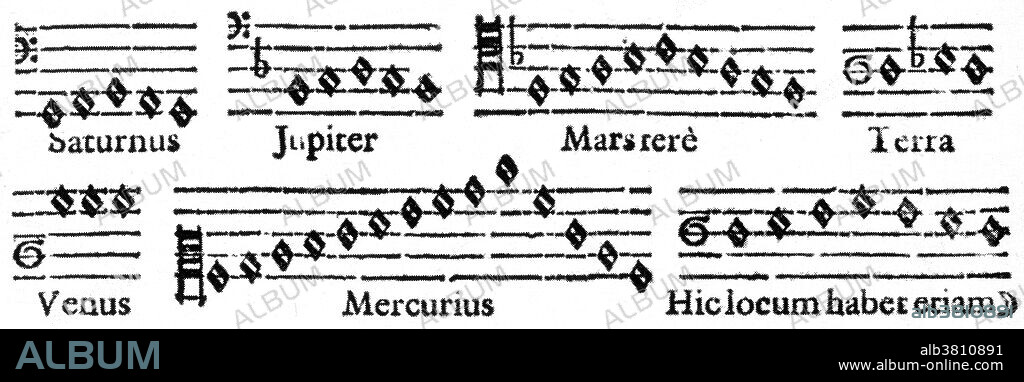alb3810891
Harmony of the World, 1619

|
Zu einem anderen Lightbox hinzufügen |
|
Zu einem anderen Lightbox hinzufügen |



Haben Sie bereits ein Konto? Anmelden
Sie haben kein Konto? Registrieren
Dieses Bild kaufen.
Nutzung auswählen:

Titel:
Harmony of the World, 1619
Untertitel:
Siehe automatische Übersetzung
In Harmonices Mundi (1619) Kepler attempted to explain the harmony of the world and contained what is known today as his third law. The work was founded on geometry, from which Kepler derived first a theory of musical harmony and then a cosmology of the heavens and the earth. Kepler attempted to find common rules between music and movement in the solar system. His music of the spheres is based on the relative maximum and minimum angular velocities of the planet measured from the sun. Using his theories, Kepler allotted to the planets musical intervals and musical motion. Johannes Kepler (1571-1630) was a German mathematician, astronomer and astrologer. A key figure in the 17th century scientific revolution, he is best known for his laws of planetary motion based on his works Astronomia nova, Harmonices Mundi, and Epitome of Copernican Astronomy. These works also provided one of the foundations for Isaac Newton's theory of universal gravitation.
Bildnachweis:
Album / Science Source / New York Public Library
Freigaben (Releases):
Bildgröße:
5529 x 1774 px | 28.1 MB
Druckgröße:
46.8 x 15.0 cm | 18.4 x 5.9 in (300 dpi)
Schlüsselwörter:
16. JAHRHUNDERT • 16. JH. • ASTROLOGIE • ASTRONOMIE • BERÜHMT • BERÜHMTE PERSÖNLICHKEIT • DEUTSCH • EUROPAEER (F M) • EUROPAEER • EUROPÄER (F M) • EUROPÄER • EUROPÄISCH • ILLUSTRATION • ILLUSTRATIONS • NATURWISSENSCHAFTLER • NOTABEL • OBSERVATORIUM • PLANETARIUM • PORTRAIT • PROMINENZ • STERNWARTE • WISSENSCH.: ASTRONOMIE • WISSENSCHAFTLER • WISSENSCHAFTLICH
 Pinterest
Pinterest Twitter
Twitter Facebook
Facebook Link kopieren
Link kopieren Email
Email
